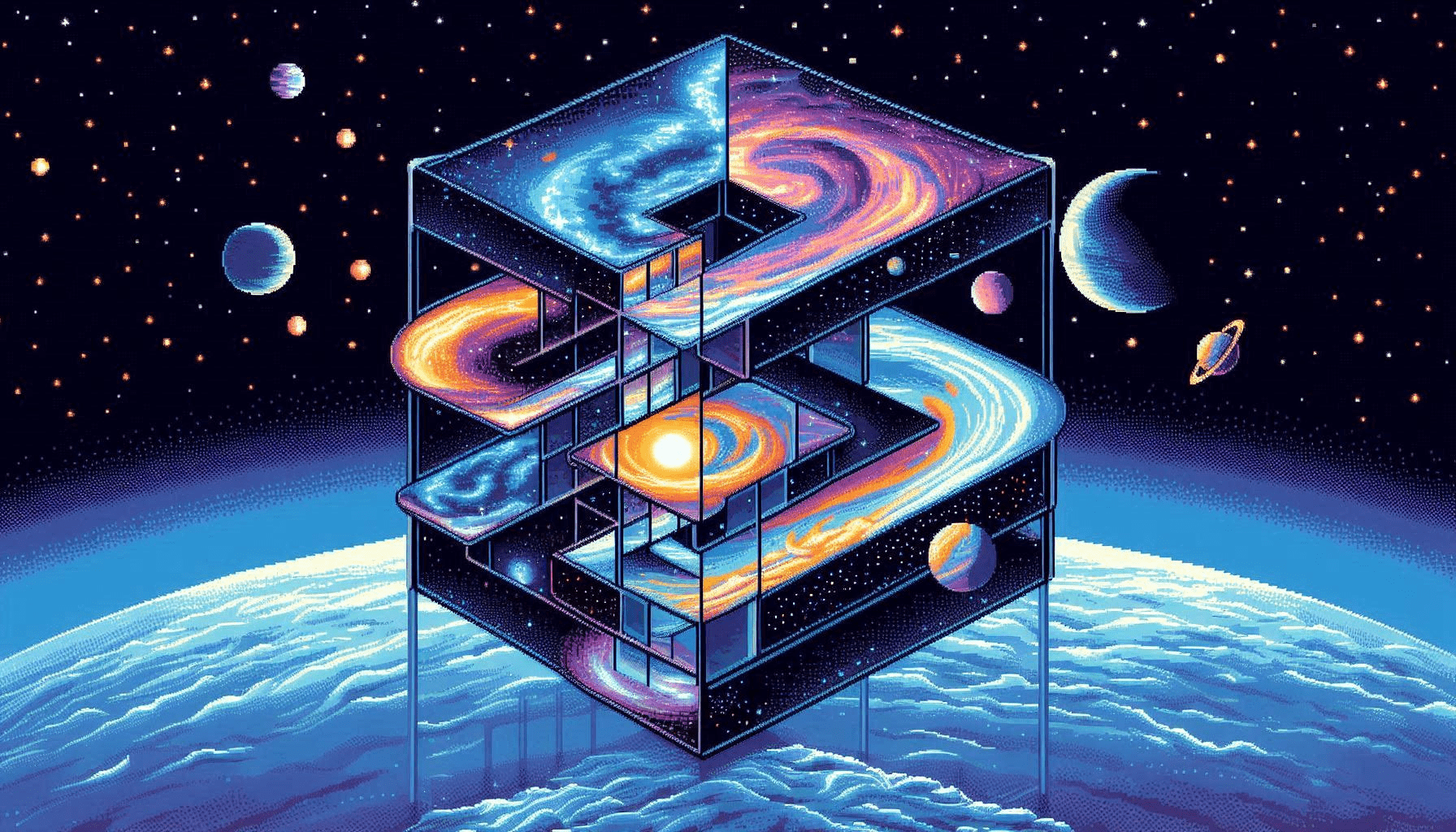Exploring Parallel Universes
Parallel universes, also known as alternate realities or multiverses, are a fascinating concept in both science fiction and theoretical physics. The idea suggests that there could be multiple, perhaps infinite, universes existing alongside our own, each with its own unique properties and laws of physics.

Theoretical Background
The concept of parallel universes arises from several theories in physics, including:
- Quantum Mechanics: The Many-Worlds Interpretation suggests that all possible outcomes of quantum measurements are realized in some "world" or universe.
- String Theory: Proposes the existence of multiple dimensions beyond the familiar three spatial dimensions and one-time dimension.
- Cosmology: The idea of an infinite universe could imply the existence of regions beyond our observable universe that are effectively separate universes.

Simulating Parallel Universes in Code
Let's explore some code snippets that simulate aspects of parallel universes.
Java: Creating Parallel Universes
In Java, we can create a simple simulation of parallel universes using classes and objects.
public class ParallelUniverse {
private String name;
private double probability;
public ParallelUniverse(String name, double probability) {
this.name = name;
this.probability = probability;
}
public void displayInfo() {
System.out.println("Universe: " + name + ", Probability: " + probability);
}
public static void main(String[] args) {
ParallelUniverse universe1 = new ParallelUniverse("Universe A", 0.5);
ParallelUniverse universe2 = new ParallelUniverse("Universe B", 0.3);
universe1.displayInfo();
universe2.displayInfo();
}
}
Python: Simulating Quantum States
In Python, we can use libraries like numpy to simulate quantum states in different universes.
import numpy as np
class QuantumState:
def __init__(self, state_vector):
self.state_vector = state_vector
def measure(self):
probabilities = np.abs(self.state_vector) ** 2
return np.random.choice(len(self.state_vector), p=probabilities)
# Example usage
state = QuantumState(np.array([0.6, 0.8]))
measurement = state.measure()
print(f"Measured state: {measurement}")
JSON: Representing Universes
We can use JSON to represent data about different parallel universes.
{
"universes": [
{
"name": "Universe A",
"probability": 0.5
},
{
"name": "Universe B",
"probability": 0.3
}
]
}
C: Basic Universe Simulation
In C, we can create a basic simulation of parallel universes using structs.
#include <stdio.h>
typedef struct {
char name[50];
double probability;
} Universe;
void displayInfo(Universe u) {
printf("Universe: %s, Probability: %.2f\n", u.name, u.probability);
}
int main() {
Universe universe1 = {"Universe A", 0.5};
Universe universe2 = {"Universe B", 0.3};
displayInfo(universe1);
displayInfo(universe2);
return 0;
}
Go: Simulating Universes
In Go, we can create a simple simulation of parallel universes using structs and functions.
package main
import "fmt"
type Universe struct {
Name string
Probability float64
}
func displayInfo(u Universe) {
fmt.Printf("Universe: %s, Probability: %.2f\n", u.Name, u.Probability)
}
func main() {
universe1 := Universe{"Universe A", 0.5}
universe2 := Universe{"Universe B", 0.3}
displayInfo(universe1)
displayInfo(universe2)
}
Conclusion
The idea of parallel universes opens up a realm of possibilities both in theoretical physics and in our imagination. Through code, we can simulate and explore these fascinating concepts, gaining a deeper understanding of the potential complexities of our universe.